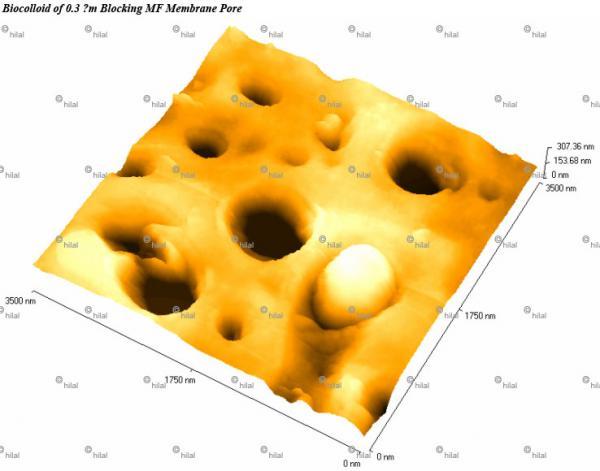Bacteria have a bad name among humans, especially when it comes to those that are carried in water and cause diseases and infections. However, researchers from the University of Nottingham are using these tiny particles in combination with the most advanced membrane filtration methods to upgrade water purification technologies.

These bacteria, single-celled creatures, feed on the impurities found in the water - both in those that undergo purification before use in industry and those used for drinking - in a process called "biological removal" (bioremediation). In the next step, the water is filtered through porous membranes, which function similar to a fine sieve. The nozzles in these sieves are microscopic, and some are so tiny that they can only be seen with nanometer measuring devices. The diameter of the nozzles in these membranes can range from ten microns (the ten-thousandth of a millimeter) to a nanometer (a millionth of a millimeter).
These methods can develop into processes that will optimize the use of water - both in the fields of industry and in the supply of drinking water to areas where this resource is expensive. The research is led by Nidal Hilal, professor of chemical and process engineering at the "Center for Clean Water Methods" - a leading global research center in its field that develops advanced water treatment methods at the University of Nottingham in the UK. Current membrane filtration methods used in water treatment processes can lose their effectiveness over time, due to the clogging of the nozzles with various impurities. By using this method, the membranes can be cleaned inside the closed system, without the need to take them out.
The researchers at the center developed the discussed method in collaboration with "Cardev International", a fuel refining company located in Harrogate. In addition to their multiple effectiveness in water purification processes and in converting liquid industrial waste contaminated with metals and oils into clean water, the nanofiltration membranes have a useful by-product. The waste products have a high energy value and can be used as fuels. Membranes of this type are also used in research funded by the Middle East Water Desalination Research Center, which focuses on preparing drinking water from seawater. By pre-treating the seawater with these filters and removing the impurities, the membranes reduce the waste in the machine parts of the following stages - water desalination by reverse osmosis or humic desalination. This fact can prevent damage to machine components while reducing the need for expensive replacements and repairs.
By measuring the properties of liquids at the nanometer scale, using state-of-the-art atomic force microscope (AFM) equipment found at universities, researchers can examine how liquids behave at the atomic level - how they flow and separate from each other. These results can help mechanics and industry, for example - optimizing the use of fuels and oils in the engines of various vehicles.
The liquids are also tested in a wide temperature range - from the very low temperature of minus fifty degrees Celsius to one hundred and fifty degrees. Professor Hilal says: "The properties of liquids have never been examined on such a small scale." By combined use of the methods of removing the contamination by bacteria and nanofiltration, the water purification process becomes unified - using much less energy than the existing processes. In addition to this, the recycling of waste products into fuels brings us to a method known today as "green technology".
http://www.sciencedaily.com/releases/2008/02/080222095403.htm

One response
Why are there no links to articles on the subject?